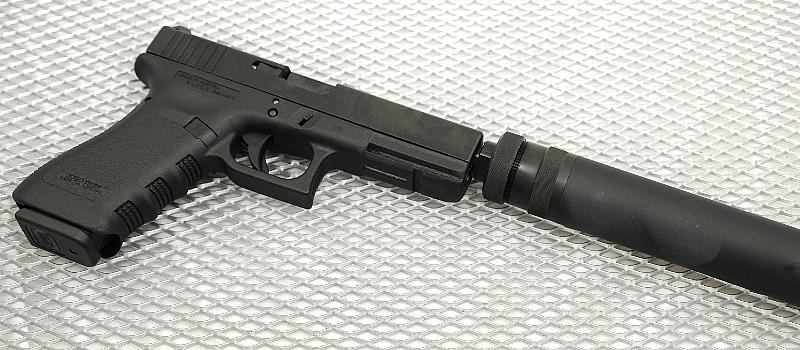In order of timing:
- Action noise required to ignite the round. (The click you hear from a misfire.)
- Muzzle blast resulting from the discharge of propellant gas from the end of the barrel. (Thunder.)
- Sonic signature of the projectile in flight for supersonic velocity rounds. (Sonic boom.)
- Action noise in some firearm variants as the spent round is discharged and a fresh round reloaded. (Racking the slide.)
- Impact noise created as the projectile finds terminal impact. (Thud.)
The two loudest sounds in a gunshot are typically the muzzle blast and the sonic signature. Paired reports from the same shot may be observed when the listener is first reached by the shock wave generated by the bullet flying past at supersonic speed, then by the muzzle blast moving at sound speed all the way from the muzzle.
While suppressors are referred to as “silencers”, the latter is misleading because no firearm can be made completely silent, as the term “silencer” implies. Functionally, a suppressor is meant to diminish the report of a discharged round, or make its sound unrecognizable. Other sounds emanating from the weapon remain unchanged. Even subsonic bullets make distinct sounds by their passage through the air and striking targets, and supersonic bullets produce a small sonic boom, resulting in a “ballistic crack.” Semi- and fully automatic firearms also make distinct noises as their actions cycle, ejecting the fired cartridge case and loading a new round. Despite being misleading, the term “silencer” is still widespread.
Both the US Department of Justice and the BATF (Bureau of Alcohol, Tobacco, Firearms and Explosives) refer to these devices as “silencers”. Additionally, Hiram Percy Maxim (the original inventor of the device) marketed them as “Maxim Silencers.”
Suppressors — any portable device designed to muffle or disguise the report of a portable firearm.
